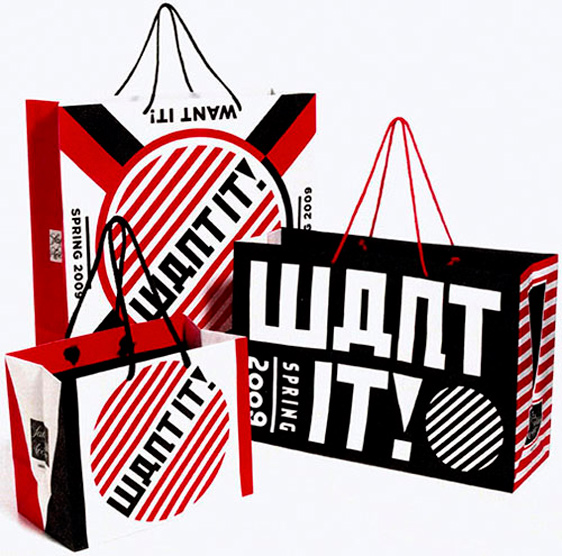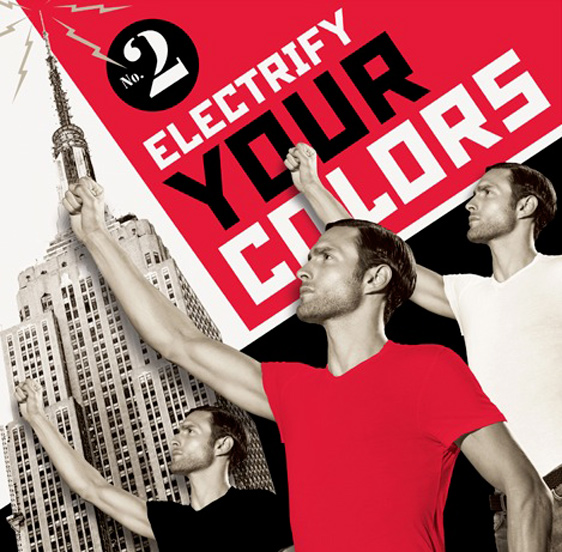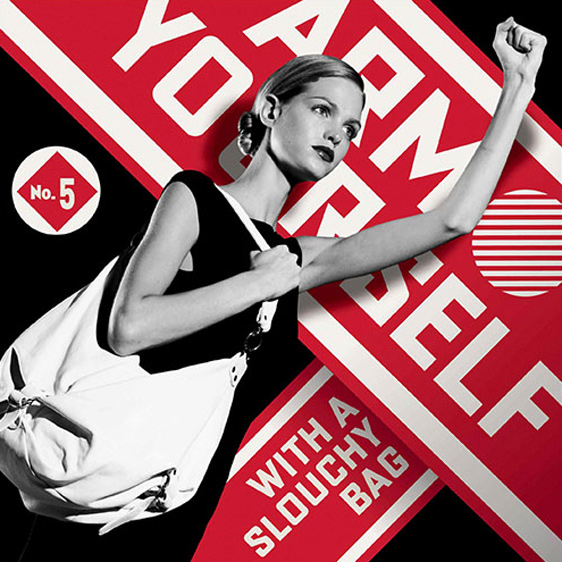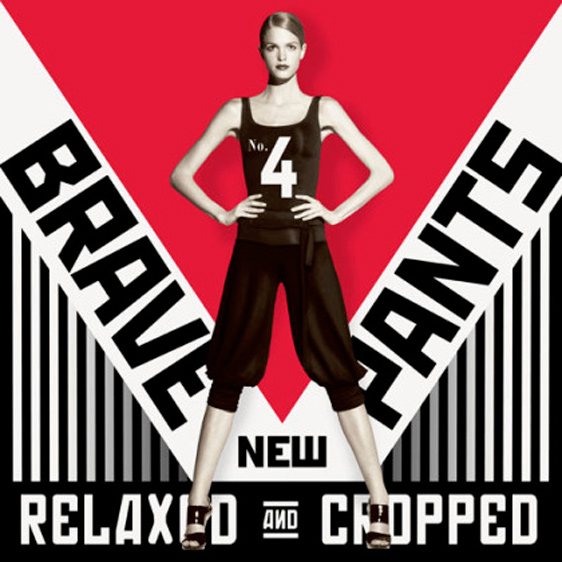The hidden meanings of Destined to be Happy exhibition - The Interview with Irina Korina
10 January 2017 | By
09 January 2017 | By
Inside the Picture: Installation Art in Three Acts - by Jane A. Sharp
19 November 2016 | By
Conversations with Andrei Monastyrski - by Sabine Hänsgen
17 November 2016 | By
Thinking Pictures | Introduction - by Jane A. Sharp
15 November 2016 | By
31 October 2016 | By
Tatlin and his objects - by James McLean
02 August 2016 | By
Housing, interior design and the Soviet woman during the Khrushchev era - by Jemimah Hudson
02 August 2016 | By
Dressing the Soviet Woman Part 3: "Are Russians Women?" Vogue on Soviet Vanity - by Waleria Dorogova
18 May 2016 | By
Dressing the Soviet Woman Part 1 - by Waleria Dorogova
13 May 2016 | By
Eisenstein's Circle: Interview With Artist Alisa Oleva
31 March 2016 | By
Mescherin and his Elektronik Orchestra - by James McLean
13 January 2016 | By
SSEES Centenary Film Festival Opening Night - A review by Georgina Saunders
27 October 2015 | By
Nijinsky's Jeux by Olivia Bašić
28 July 2015 | By
Learning the theremin by Ortino
06 July 2015 | By
Impressions of Post- Soviet Warsaw by Harriet Halsey
05 May 2015 | By
Facing the Monument: Facing the Future
11 March 2015 | By Bazarov
'Bolt' and the problem of Soviet ballet, 1931
16 February 2015 | By Ivan Sollertinsky
Some Thoughts on the Ballets Russes Abroad
16 December 2014 | By Isabel Stockholm
Last Orders for the Grand Duchy
11 December 2014 | By Bazarov
Rozanova and Malevich – Racing Towards Abstraction?
15 October 2014 | By Mollie Arbuthnot
Cold War Curios: Chasing Down Classics of Soviet Design
25 September 2014 | By
Walter Spies, Moscow 1895 – Indonesia 1942
13 August 2014 | By Bazarov
'Lenin is a Mushroom' and Other Spoofs from the Late Soviet Era
07 August 2014 | By Eugenia Ellanskaya
From Canvas to Fabric: Liubov Popova and Sonia Delaunay
29 July 2014 | By Alex Chiriac
My Communist Childhood: Growing up in Soviet Romania
21 July 2014 | By Alex Chiriac
Monumental Misconceptions: The Artist as Liberator of Forgotten Art
12 May 2014 | By Rachel Hajek
28 April 2014 | By Rachel Hajek
An Orgy Becomes a Brawl: Chagall's Illustrations for Gogol's Dead Souls
14 April 2014 | By Josephine Roulet
KINO/FILM | Stone Lithography Demonstration at the London Print Studio
08 April 2014 | By Alex Chiriac
24 March 2014 | By Renée-Claude Landry
Book review | A Mysterious Accord: 65 Maximiliana, or the Illegal Practice of Astronomy
19 March 2014 | By Rosie Rockel
Leading Ladies: Laura Knight and the Ballets Russes
10 March 2014 | By Bazarov
Exhibition Review | Cash flow: The Russian Pavilion at the 2013 Venice Biennale
03 March 2014 | By Rosie Rockel
24 February 2014 | By Ellie Pavey
Guest Blog | Pulsating Crystals
17 February 2014 | By Robert Chandler Chandler
Theatre Review | Portrait as Presence in Fortune’s Fool (1848) by Ivan Turgenev
10 February 2014 | By Bazarov
03 February 2014 | By Paul Rennie
Amazons in Australia – Unravelling Space and Place Down-Under
27 January 2014 | By Bazarov
Exhibition Review | Siberia and the East, fire and ice. A synthesis of the indigenous and the exotic
11 December 2013 | By Nina Lobanov-Rostovsky
Shostakovich: A Russian Composer?
05 December 2013 | By Bazarov
Marianne von Werefkin: Western Art – Russian Soul
05 November 2013 | By Bazarov
Chagall Self-portraits at the Musée Chagall, Nice/St Paul-de-Vence
28 September 2013 | By Bazarov
31 July 2013 | By Richard Barling
Exhibition review | Lissitsky — Kabakov: Utopia and Reality
25 April 2013 | By Richard Barling
Exhibition review | Ilya and Emilia Kabakov: The Happiest Man
18 April 2013 | By Richard Barling
24 March 2014 | By Renée-Claude Landry

On February 26, 2009, ADWEEK magazine announced the launch of the new spring marketing campaign by U.S. retail giant Saks Fifth Avenue. Right from the start of Kenneth Hein’s opening remarks in his article 'Saks Selects Shepard Fairey for Spring Ad Effort', the reader senses the ironic undertone, “The proletariat surely wouldn’t care for a bourgeoisie brand like Saks Fifth Avenue, however that hasn’t stopped the retailer from borrowing the look of a Russian Communist-era poster.”
I’d like to think it’s ironic. If not, it’s in lousy taste. At a time when unemployment is soaring and social unrest rising, Saks Fifth Avenue, the American department store chain, is trying to woo shoppers with a Constructivist-style advertisement featuring models raising their arms in a communist salute and carrier bags bearing the slogan ‘Want it!’


Shepard Fairey. Spring “Want it!” campaign for Saks Fifth Avenue (2009). “Electrify Your Colors.” Reprinted from ADWEEK magazine, Februrary 26, 2009
Even more ironic according to Rawsthorn was Fairey’s inspiration for the campaign, which exploited the graphic design work of artist Aleksandr Rodchenko who had started to design advertisements for the State-run department retailer GUM (Main Universal Store - Glavnyi Universalnyi Magazin) in the 1920s. Quoting Mayakovsky’s (Rodchenko’s advertising partner) infamous expression, “deploy all of the weapons used by our enemies,” Rawsthorn questions not only the timing of the campaign, but more importantly, the objective. Persuading people to buy a “slouchy bag” instead of a new political system was for Rawsthorn, farcical.
Putting aside the political undertone of the campaign within its existing socio-political context in the USA at the time, where American artists were exploiting communist-era programs to promote industry in the U.S. (not unlike Soviet artists Rodchenko and Mayakovsky exploiting capitalistic programs to promote Communism back in the 1920s) the graphic elements employed by Fairey in the designs presented to Saks and his own objectives for exploiting them raises an interesting debate regarding the lasting influence of constructivist techniques in communication arts.
Comprised of bold marketing components, which consisted of vivid contrasts of type and images printed in dramatic colour applications of red, black and white, the Saks advertisements are plainly executed in the same Constructivist style Rodchenko employed in his own graphic designs in the 1920s. In one of the campaign posters, a young woman (looking very proletarian with her determined expression and authoritative stance) raises her arm with clenched fist demanding the goods Saks Fifth Avenue offers. The slogan reads, “Arm Yourself, With a Slouchy Bag.” This is obviously not about raising your fist to demand better stitching on your Prada bags, cleverly it is attempting to catch the audience’s attention in order to incite it to not only buy the product being promoted, but more importantly, be proud of supporting the brand behind it.

Shepard Fairey. Spring “Want it!” campaign for Saks Fifth Avenue (2009). “Arm Yourself.” Reprinted from ADWEEK magazine, Februrary 26, 2009
Another poster has a female model wearing relaxed cropped pants, which are described as “Brave Pants.” Looking like they were produced to defend workers’ rights, these designs promote a call to action. This objective is made even clearer by the campaign’s central slogan “Want It!” found on all of the marketing collateral. A testament to the legacy of Rodchenko’s contribution to graphic design even today.

Shepard Fairey. Spring “Want it!” campaign for Saks Fifth Avenue (2009). “Brave Pants.” Reprinted from ADWEEK magazine, Februrary 26, 2009
Clearly, for Fairey, Rodchenko’s innovative designs could be transported to any context because at the core of their execution the graphic elements employed communicated a strong message that would aid in stimulating the masses to participate in its idea. Even though the U.S. was in a recession and sales of goods were down, Saks was petitioning the masses to join them in an effort to stay strong together, not only helping their American brand, but more importantly, contributing to the economy as a whole. Asked if his work could be misunderstood as a form of sinister retail indoctrination, Fairey said, “Some people might think it could be making fun of what’s going on right now, but I think most people are sophisticated enough to realise it’s a way of grabbing attention. It’s commerce. I created this campaign because I’m not interested in speaking to a small group; I’ve always thought it was the duty of intelligence to make art for the people.”


